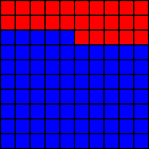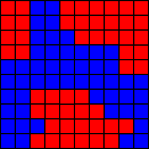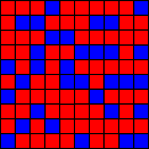Skip over navigation
Here are three populations:



An opportunity sample, a systematic sample and a random sample was taken from each.
Can you match the samples to the populations?
Opportunity samples (a convenient block of 9 squares was chosen):



Systematic samples (every 11th square was chosen to give a sample size of 9):



Random samples (9 squares were chosen at random):






Or search by topic
Number and algebra
Geometry and measure
Probability and statistics
Working mathematically
Advanced mathematics
For younger learners
Sample
Age 14 to 16
ShortChallenge Level 





- Problem
- Solutions
Here are three populations:



An opportunity sample, a systematic sample and a random sample was taken from each.
Can you match the samples to the populations?
Opportunity samples (a convenient block of 9 squares was chosen):



Systematic samples (every 11th square was chosen to give a sample size of 9):



Random samples (9 squares were chosen at random):



You can find more short problems, arranged by curriculum topic, in our short problems collection.
You may also like
Gambling at Monte Carlo
A man went to Monte Carlo to try and make his fortune. Is his strategy a winning one?
Marbles and Bags
Two bags contain different numbers of red and blue marbles. A marble is removed from one of the bags. The marble is blue. What is the probability that it was removed from bag A?
Coin Tossing Games
You and I play a game involving successive throws of a fair coin. Suppose I pick HH and you pick TH. The coin is thrown repeatedly until we see either two heads in a row (I win) or a tail followed by a head (you win). What is the probability that you win?

